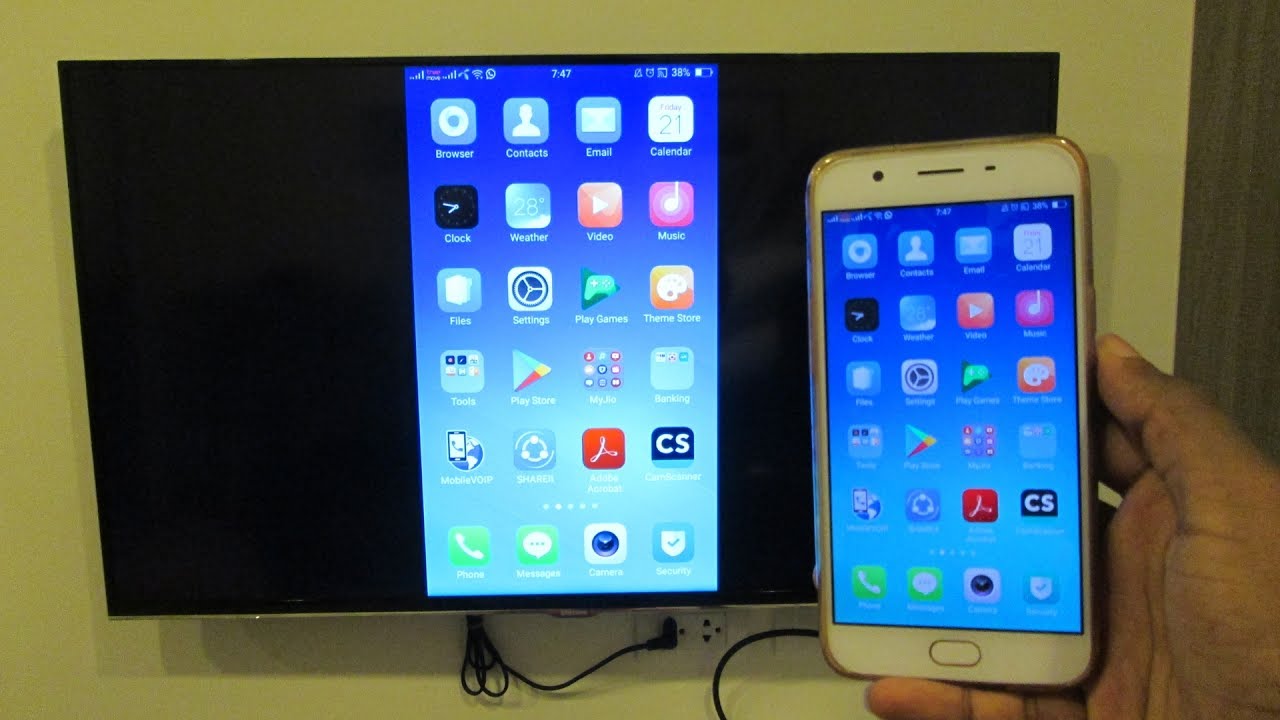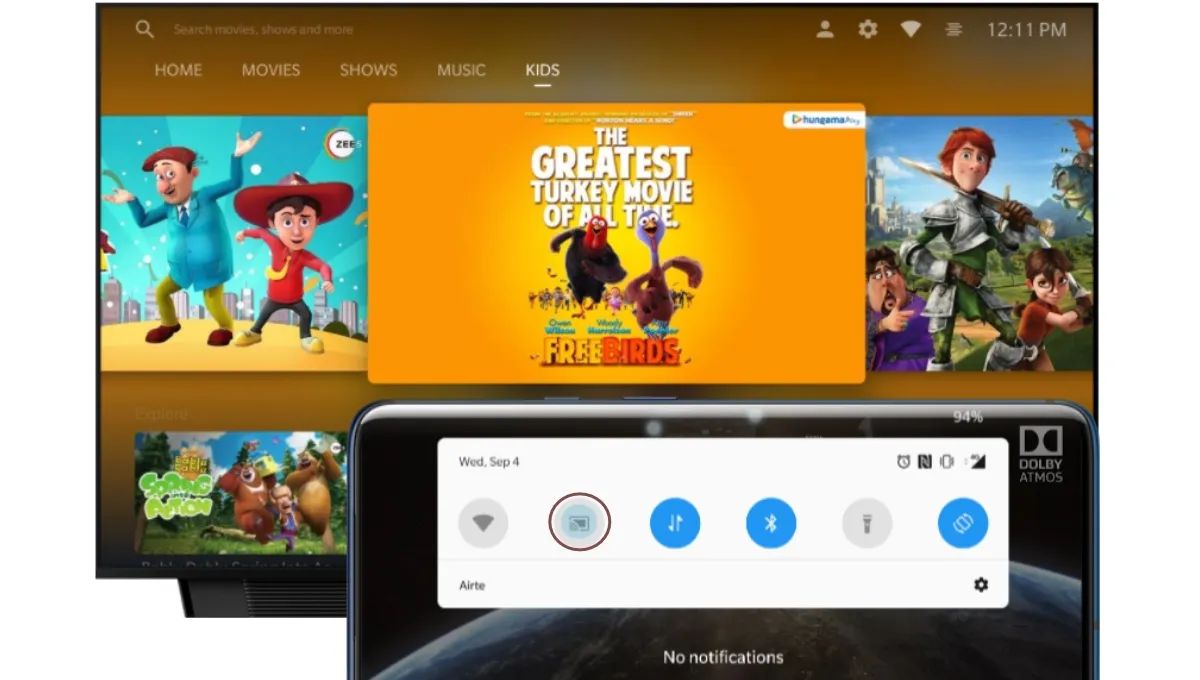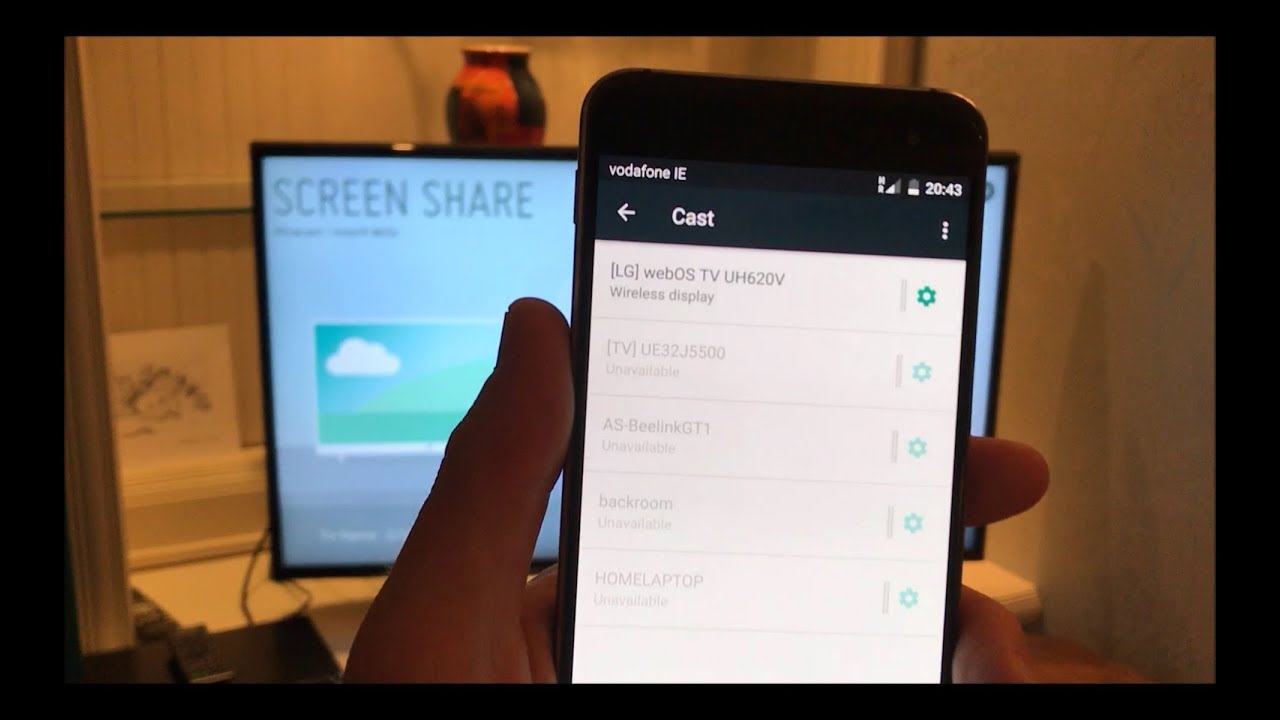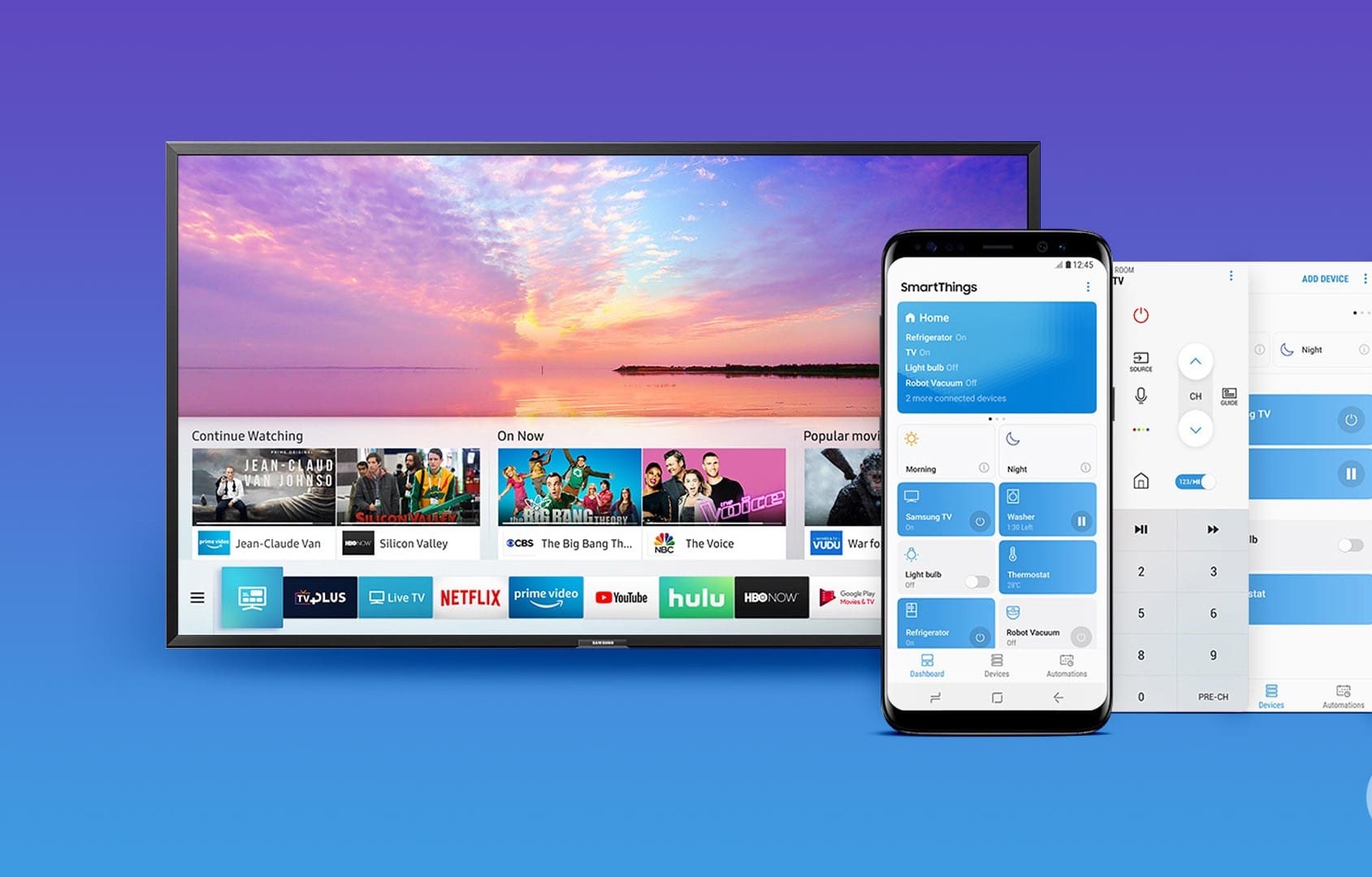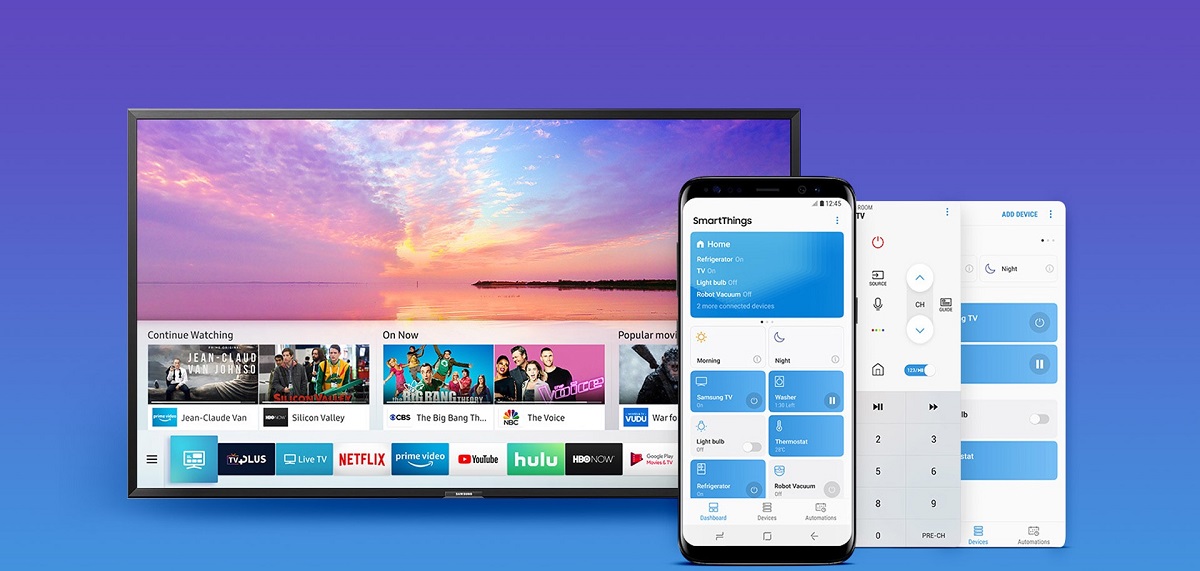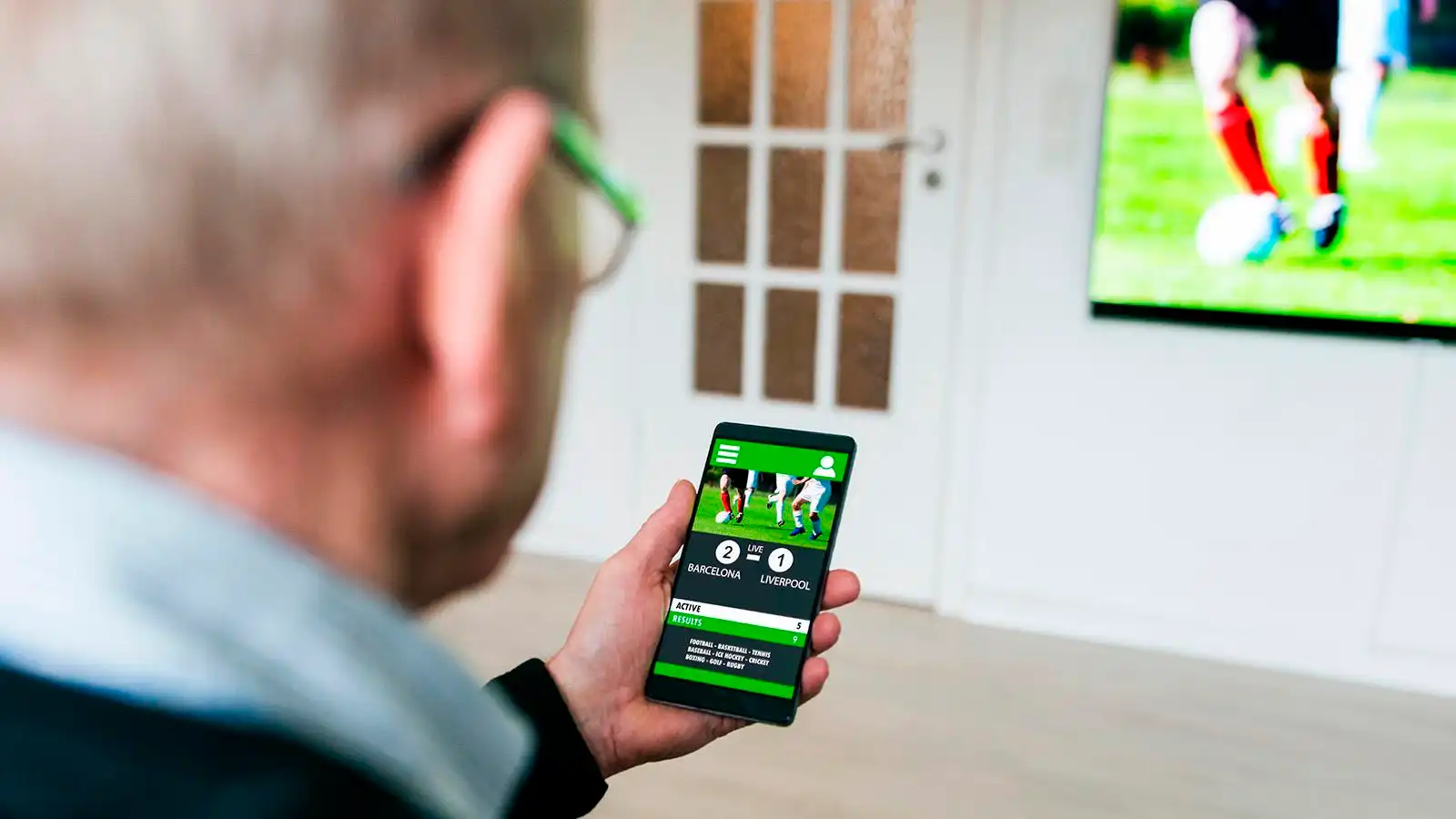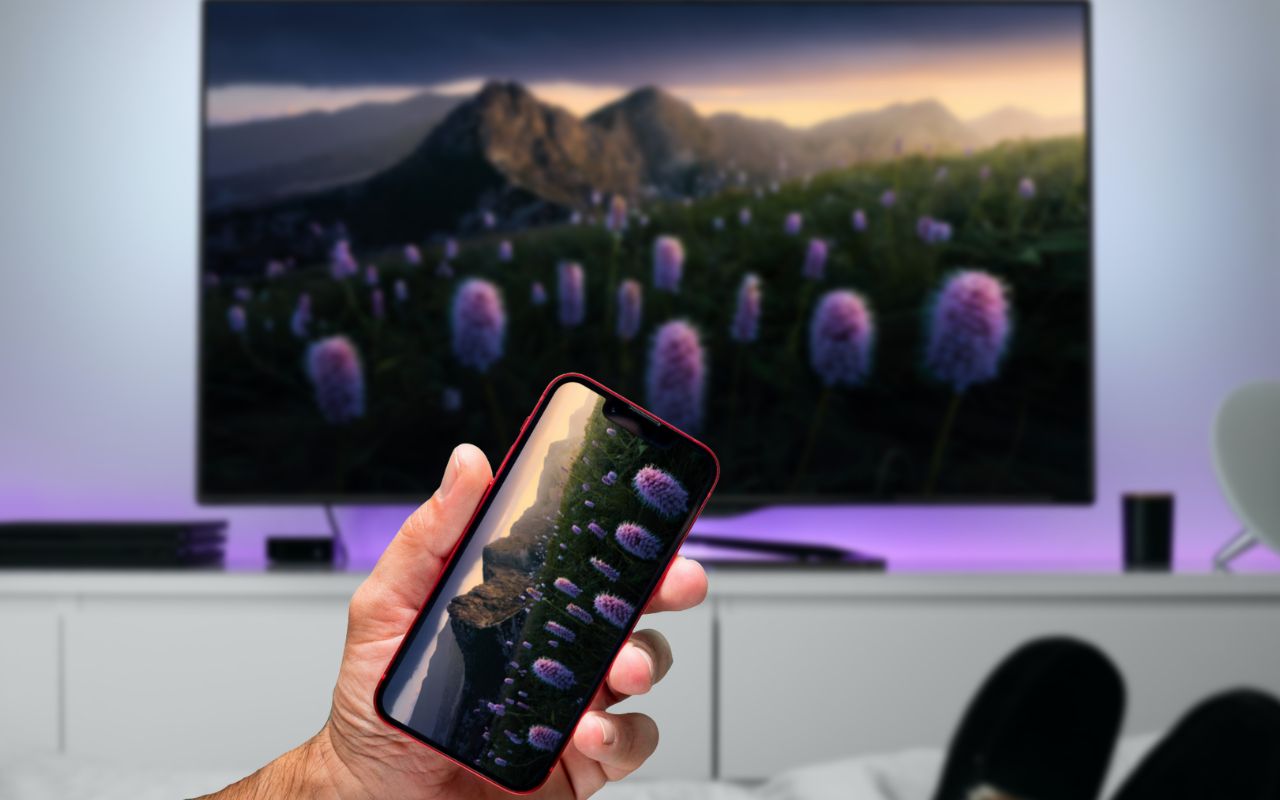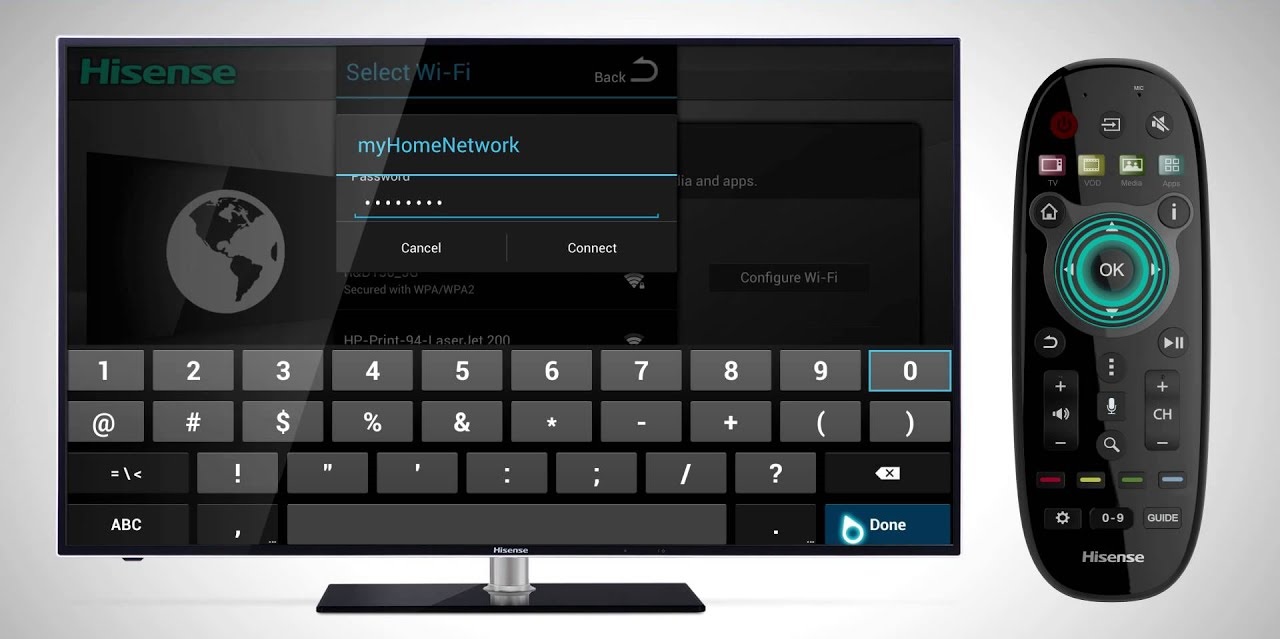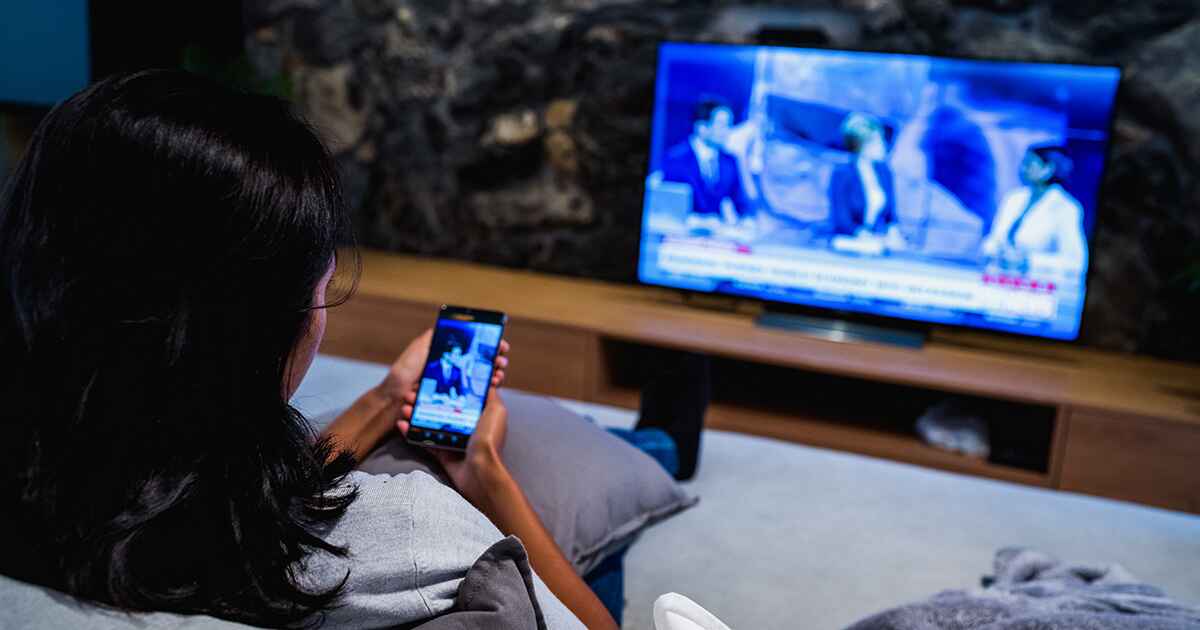Introduction
Connecting your phone to a smart TV opens up a world of entertainment possibilities. Whether you want to stream movies, watch videos, or share your photos and presentations on a bigger screen, the ability to connect your phone to your smart TV is incredibly convenient. With so many different connection methods available, it’s important to know how to choose the right one for your specific needs and device compatibility.
Gone are the days when smartphones were used solely for making calls and sending text messages. Today, smartphones have become powerful multimedia devices, capable of playing high-definition videos and streaming content from various online platforms. Smart TVs, on the other hand, offer larger screens and better audiovisual quality, making them the perfect companion for enjoying multimedia content. By connecting your phone to your smart TV, you can take advantage of the best features of both devices.
Before you dive into the world of phone-to-smart-TV connectivity, it’s important to check your phone’s compatibility with your smart TV. Not all phone models or TV brands support all connection methods, so it’s crucial to do your research beforehand. Additionally, understanding the different connection methods available will help you choose the one that suits your needs and preferences.
In this guide, we’ll explore the step-by-step process of connecting your phone to your smart TV using various connection methods. We’ll cover everything from the common HDMI connection to wireless options like Wi-Fi screen mirroring and the use of streaming devices. By the end of this guide, you’ll have the knowledge and confidence to seamlessly connect your phone to your smart TV and enjoy a larger, more immersive viewing experience.
Step 1: Check Your Phone’s Compatibility
Before you start connecting your phone to your smart TV, you need to ensure that your phone is compatible with the TV. Not all smartphones support every connection method, so it’s essential to check the compatibility to avoid any frustration later on.
To begin, check your phone’s specifications and look for features such as HDMI output, screen mirroring capability, or compatibility with streaming devices. Most modern smartphones come with HDMI or USB-C ports for direct connections, while others support wireless casting through Wi-Fi or Bluetooth.
Next, verify the compatibility of your smart TV. Look for HDMI ports or wireless connectivity options on the TV. If your TV doesn’t have HDMI ports, it may not support direct cable connections, but it might still have other wireless features to connect to your phone. Check the TV’s user manual or manufacturer’s website for detailed information.
Some smartphones and smart TVs are equipped with specific technology such as MHL (Mobile High-Definition Link) or SlimPort, which allows them to connect via USB ports. These technologies enable you to transmit audio and video signals simultaneously while providing charging capabilities to your phone. If your devices support MHL or SlimPort, it’s a convenient option to consider.
If you’re unsure about your phone’s compatibility, you can always reach out to the manufacturer’s support or visit their official website for compatibility information. Additionally, online forums and tech communities can provide valuable insights from users who have already tested different connection methods with similar phone and TV models.
Remember, compatibility plays a critical role in establishing a successful connection between your phone and smart TV. Take the time to research and verify compatibility before moving on to the next step. Doing so will save you time and frustration and ensure a smooth and enjoyable viewing experience.
Step 2: Choose the Right Connection Method
Once you’ve confirmed the compatibility of your phone and smart TV, it’s time to choose the right connection method. The method you select will depend on your device capabilities, preferred setup, and the features you want to utilize. Here are the most common connection methods to consider:
- HDMI Connection: If your phone and smart TV both have HDMI ports, this is the simplest and most reliable method. You’ll need an HDMI cable to connect the two devices, ensuring that you have the correct HDMI port type for your phone and TV. HDMI provides high-quality audio and video transmission, making it ideal for streaming movies, gaming, and more.
- Wireless Screen Mirroring: Many smartphones and smart TVs support wireless screen mirroring via Wi-Fi. This feature allows you to duplicate your phone’s screen on the TV wirelessly. Look for screen mirroring options in your phone’s settings or check if your TV has built-in screen mirroring capabilities. Keep in mind that Wi-Fi screen mirroring may have a slight delay, making it less suitable for gaming or fast-paced content.
- Streaming Devices: If your phone or smart TV lacks direct connection options, consider using a streaming device like Chromecast, Amazon Fire TV Stick, Apple TV, or Roku. These devices connect to your TV’s HDMI port and allow you to stream content from your phone to the TV using Wi-Fi or Bluetooth. It’s an excellent option for accessing streaming platforms like Netflix, Hulu, and YouTube directly on your TV.
- DLNA and Miracast: DLNA (Digital Living Network Alliance) and Miracast are wireless standards that enable you to share media from your phone to compatible smart TVs. Check if your devices support these standards and follow the respective setup instructions to establish the connection. DLNA is often used for sharing multimedia files, while Miracast focuses on screen mirroring.
Consider your specific requirements, the availability of ports, and the convenience of each method. Remember that different devices may have unique names for these features, so refer to the user manuals or online guides provided by the manufacturers for precise instructions.
By choosing the right connection method, you can ensure a seamless and hassle-free experience when connecting your phone to your smart TV. Take your time to understand the capabilities of your devices and select the method that best suits your needs.
Step 3: Connect Your Phone to Your Smart TV via HDMI
Connecting your phone to your smart TV via HDMI provides a reliable and high-quality connection for enjoying movies, videos, and other content on a bigger screen. Follow these steps to connect your phone to your smart TV using an HDMI cable:
- Check your phone’s port: Determine which type of HDMI port your phone has. The most common options are HDMI Mini or Micro, so make sure you have the necessary adapter or cable to connect your phone to a standard HDMI cable.
- Check your TV’s port: Identify the HDMI port on your smart TV. It is usually located on the back or side panel. Take note of the HDMI input number associated with the port you’ll be using.
- Connect the HDMI cable: Plug one end of the HDMI cable into your phone’s HDMI port or the appropriate adapter, and insert the other end into the HDMI port on your smart TV.
- Select the correct HDMI input: Use your TV’s remote control to navigate to the input source menu. Select the HDMI input number corresponding to the port you connected the cable to.
- Adjust your phone’s display settings: Depending on your phone’s operating system, you may need to adjust the display settings to mirror or extend your phone’s screen. Navigate to the display settings on your phone and select the appropriate option.
- Enjoy your content on the big screen: Once the connection is established and the settings are configured, your phone’s screen will be mirrored or extended on your smart TV. You can now stream videos, browse photos, play games, or use any other apps on the big screen.
Keep in mind that some phones may require additional settings or permissions to establish the HDMI connection. Refer to your phone’s user manual or the manufacturer’s website for specific instructions if needed.
Connecting your phone to your smart TV via HDMI is a straightforward and reliable method to enjoy your favorite multimedia content on a larger screen. It provides a seamless viewing experience with excellent audio and video quality.
Step 4: Connect Your Phone to Your Smart TV via Wi-Fi
Connecting your phone to your smart TV via Wi-Fi provides a wireless and convenient way to stream content from your phone directly to your TV. Follow these steps to connect your phone to your smart TV using Wi-Fi:
- Ensure Wi-Fi compatibility: Check if both your phone and smart TV support Wi-Fi connectivity. Most modern phones and smart TVs come with built-in Wi-Fi capabilities, but it’s essential to verify this feature.
- Enable Wi-Fi: On both devices, enable Wi-Fi by going into the settings menu. Ensure that you are connected to the same Wi-Fi network on both devices.
- Find the screen mirroring option: Look for the screen mirroring or casting option on your phone. The name may differ depending on the phone brand or operating system. It could be called “Smart View,” “Screen Share,” or “Cast Screen” among others.
- Activate screen mirroring: Once you’ve found the screen mirroring option, tap on it to activate the feature and search for available devices to connect to. Your smart TV should appear in the list of available devices.
- Select your smart TV: Tap on your smart TV’s name to establish the connection. Your phone’s screen will then be mirrored on your smart TV.
- Adjust the settings (optional): Depending on your phone and smart TV, you may have additional settings to customize the screen mirroring experience. These settings may include audio preferences, display resolution, or aspect ratio adjustment.
- Start streaming: With the successful Wi-Fi connection, you can now stream your favorite content from your phone to your smart TV. Play videos, browse photos, or use apps and enjoy them on the big screen.
Note that the process of connecting your phone to your smart TV via Wi-Fi may vary slightly depending on the make and model of your devices. Refer to your phone and TV’s user manuals or online guides for more detailed instructions specific to your devices.
Connecting your phone to your smart TV via Wi-Fi provides the flexibility of wireless streaming. It allows you to enjoy your favorite content without the hassle of cables and enjoy a seamless viewing experience on a larger screen.
Step 5: Use a Streaming Device to Connect Your Phone to Your Smart TV
If your phone or smart TV doesn’t have direct connection options or you prefer a more versatile solution, using a streaming device can be a great choice. Streaming devices like Chromecast, Amazon Fire TV Stick, Apple TV, or Roku allow you to connect your phone to your smart TV wirelessly and stream content with ease. Follow these steps to connect your phone to your smart TV using a streaming device:
- Choose the right streaming device: Research and select a compatible streaming device based on your preferences and budget. Ensure that the device supports the features you require, such as screen mirroring or app compatibility.
- Connect the streaming device: Plug the streaming device into an available HDMI port on your smart TV.
- Set up the streaming device: Follow the manufacturer’s instructions to complete the initial setup of the streaming device. This typically involves connecting to your Wi-Fi network and signing in to your streaming service accounts.
- Install the companion app: Depending on the streaming device and your phone’s operating system, you may need to download and install the companion app on your phone. This app will facilitate the connection and allow you to control the streaming device.
- Connect your phone to the streaming device: Open the companion app on your phone and follow the instructions to connect it to the streaming device. This typically involves selecting the streaming device from a list of available devices.
- Start streaming: With the successful connection, you can now use your phone to control the streaming device and stream content on your smart TV. Use the companion app to browse and select videos, music, or apps to enjoy on the big screen.
Streaming devices provide access to a wide range of streaming platforms, giving you more flexibility and options for enjoying content on your smart TV. They also offer additional features like voice control, app integration, and gaming capabilities, enhancing your overall viewing experience.
Refer to the user manuals or online guides provided by the streaming device manufacturer for detailed setup instructions specific to the device you have chosen. Remember to keep your streaming device and companion app up to date to ensure optimal performance and compatibility.
Step 6: Troubleshooting Common Connectivity Issues
While connecting your phone to your smart TV is generally a straightforward process, you may encounter some common connectivity issues along the way. Here are a few troubleshooting steps to help you resolve these issues:
- Check Wi-Fi connectivity: If you’re experiencing difficulties with wireless connectivity, ensure that both your phone and smart TV are connected to the same Wi-Fi network. Restarting the Wi-Fi router may also help resolve any connection issues.
- Update software and firmware: Make sure both your phone and smart TV have the latest software updates installed. Updating the software can often fix bugs and improve compatibility with different connection methods.
- Reset network settings: If you’re still having trouble establishing a connection, try resetting the network settings on your phone and smart TV. This option is usually found in the settings menu and will remove any saved Wi-Fi networks and connection preferences.
- Verify HDMI cable and ports: If you’re using an HDMI connection, ensure that the cable is securely plugged into both your phone and smart TV. Additionally, check that the HDMI ports on both devices are functioning properly.
- Restart devices: Sometimes, a simple restart can fix connectivity issues. Try turning off both your phone and smart TV, waiting a few seconds, and then turning them back on.
- Ensure app compatibility: If you’re using apps or screen mirroring, ensure that they are compatible with both your phone and smart TV. Some apps may require specific versions or settings to function correctly.
- Check for device limit: Some smart TVs or streaming devices have a limit on the number of devices that can be connected simultaneously. Make sure you haven’t exceeded this limit, as it may prevent a successful connection.
- Consult user manuals or support: If you’ve tried the troubleshooting steps above and are still experiencing issues, consult the user manuals or contact the customer support of your phone or smart TV for further assistance.
Remember that connectivity issues can vary depending on your specific phone and smart TV models, as well as the connection method you’re using. It’s always beneficial to refer to the user manuals and support resources provided by the manufacturers for device-specific troubleshooting steps.
By following these troubleshooting steps, you’ll be equipped with the knowledge to tackle common connectivity issues and enjoy a seamless connection between your phone and smart TV.
Conclusion
Connecting your phone to your smart TV opens up a world of possibilities for enjoying multimedia content on a larger screen. By following the steps outlined in this guide, you can successfully connect your phone to your smart TV and enhance your viewing experience.
Start by checking the compatibility of your phone and smart TV to ensure that they can work together seamlessly. Then, choose the right connection method based on your devices and preferences. Whether you opt for an HDMI cable, Wi-Fi screen mirroring, or a streaming device, each option offers its own advantages and allows you to enjoy your favorite content on a larger display.
In the event of any connectivity issues, the troubleshooting steps provided in this guide can help you overcome them and establish a successful connection. From checking Wi-Fi connectivity to updating software and verifying HDMI ports, understanding these troubleshooting techniques will make your phone-to-smart-TV connection experience smoother.
As technology continues to evolve, new connection methods and features may become available. Stay informed by regularly checking for software updates and exploring the latest functionalities of your devices. Additionally, familiarize yourself with the user manuals and support resources provided by your phone and smart TV manufacturers for detailed instructions and troubleshooting assistance.
Connecting your phone to your smart TV not only allows you to enjoy a more immersive viewing experience but also gives you the flexibility to stream content from your favorite apps and platforms. So, grab your HDMI cable, enable Wi-Fi connection, or set up a streaming device, and start exploring the endless entertainment possibilities that come with connecting your phone to your smart TV.
Remember to have fun and make the most out of your newly established connection. Sit back, relax, and enjoy a cinema-like experience from the comfort of your own home.







